ARTICLES WITH INFORMATION FOR WISCONSIN ANTIQUE BOTTLE COLLECTORS:::.
Articles with great information of interest for Wisconsin antique bottle collectors. Please, do not republish without expressed written permission from the original publisher or author.
- Directly across the street from the Eau Claire Public Library there is a drive up bank facility. It's not all that busy a place, downtown Eau Claire has suffered the fate of many urban cores in our shopping mall economy. But that same site was much livelier in the years just prior to the Civil War, when it was occupied by an establishment called The Sign of the Two Barrels, run by E. Robert Hantzsch. A native of Germany, Hantzsch came to Eau Claire in 1859. He built his saloon on the corner of Farwell and Eau Claire Streets. Early advertisements list an amazing array of items for sale including many varieties of whiskey, ... Read Full Article
- A few years back, we began to develop a reputation for finding great bottles. When we decided to dive right near shore one spring, a small audience of friends wanted to come see what we were doing. They planned to overlook our near shore dives and to be the first to see any old bottles we might pull out. It was still fairly early in the year (March), but once we decided to go hunting, we wouldn't let a few little things like the temperature or the weather stop us. Steve and I planned a shallow two-tank dive in a lake near Oconomowoc, Wisconsin. As were searching for a good spot in the icy water, I found a pint amber blob b... Read Full Article
- Following is a list of the brand names used by various companies in Wisconsin before prohibition. They were gathered from advertising, collectible items like bottles and shot glasses and various other sources. If you are aware of other please let us know so we can expand the database. Company Brand Allmeyer, Fred Altenhoefen, B. M. Andrzejewski, A. & Son Averill Barth, John Volunteer Whiskey Barth, Peter Patrick Henry Whiskey Barth, Peter Beaver Baum & Loeb Co. Ha... Read Full Article
- There are a number of bottles and advertising pieces with the name "Zien" or "Berliner Magen Bitters" from Milwaukee, St. Paul and Duluth Minnesota, as well as from the west coast. Tim Wolter and I researched the topic to identify the connections among them. We found that several businesses and spin-off companies flourished for only about ten years just prior to prohibition, then disappeared like many similar businesses. Here is what we learned. The Zien Brothers Jacob D. Zien started in a liquor business in 1889 in Duluth, Minnesota when he opened a saloon with a man by the name of J. R. Duff. Not much is known about th... Read Full Article
- Originally published 1975 On the bottom of Pewaukee Lake, empty and discarded, lay a lonely beer bottle. During the early 1890's this bottle was possibly emptied by a fisherman while serenely sitting in his boat and waiting for a fish to bite, or by a picnicker while eating lunch and watching the swimmers and boaters. But alas, after the bottle was emptied it was tossed in the lake to slowly sink and settle on the bottom in complete rejection. However, the fate of this bottle was not to spend thousands of years unknown and disintegrating in the mud on the lake bottom. In a sunny, warm summer afternoon, this bottle sudden... Read Full Article
- from Form Post @ Mrbottles.com; PICTURES WILL BE ADDED SOON!!! My great-great-great grandfather Luther C. Batchelder sold his ME pottery in 1845 and moved his sons, Calvin, Cleveland, and Carlton to Neenah and Menasha. When Luther died in 1850 his sons carried on in the pottery business. Cleveland was my great-great grandfather. Carlton, I understand expanded the line of products. Luther Cleveland Batchelder was born in 1804 to Jacob Bachelder and Mary (Polly) Cleveland in Concord, NH. He married Jane Polly Whittemore, daughter of a NH pottery family in 1824. Three boys were born in Concord- Cleveland 1823, Calvin B 1824... Read Full Article
- Bottle Ethics by Bob Libbey How often has a seemingly normal and honest person changed from Dr. Jekyll to Mr. Hyde when a rare bottle was at stake? Shouldn’t we all strive to be the same conscientious person we always are even when we are involved in a bottle transaction? This article is an attempt to shed light on some of the specific ethical dilemmas that can occur when we are dealing with rare (and not so rare) bottles. It is hoped that this can open some discussion as to what is fair, reasonable, and ethical behavior. Maybe just thinking about some of these issues ahead of time can save you stress and disagreeme... Read Full Article
- Top 10 Reasons Why We LOVE Antique Bottles: 10) They never complain, talk back or argue. 9) You only pay for them one time. 8) The older they get, the better they look. 7) They appreciate in value every year. 6) You cannot contract a disease from loving them. 5) They never become jealous of one another, or demand that you "get rid of" all but one. 4) They don't require "romantic sunsets" or "long walks on the beach". 3) They never get drunk, fat or ugly. 2) They never hire an attorney to sue you, And the number one reason why we love antique bottles:... 1) They will never legally "own" half of each other . . . Read Full Article
- We now provide treatment and counseling for individuals (and their affected family members) afflicted with the obsessive/compulsive disorders related to the antique bottle acquisition addiction. For many years we have seen the effects of these disorders wreak havoc on families and individuals, even though recognition of the illness within the mental health community has only recently been forthcoming. To date, psychiatric professionals have recognized the following specific disorders related to the disease: 1) AOD (acquisitional obsession disorder) This extremely destructive disorder is often thought to be the root caus... Read Full Article
- Hutchinson soda bottles are a unique type of antique bottle that had a wire stopper inside the neck and blob of the bottle. We collectors often refer to them simply as "Hutches". The wire piece that makes up the stopper on the bottle is slightly hourglass shaped. It is made out of one piece of wire (bent in half) to form this shape. On one end, there is a rubber gasket (held in place by washers welded to the wire). Once the stopper is placed inside the bottle, the rubber gasket winds up on the inside (where the contents are). The gasket is designed to seal the bottle below the neck at the shoulder of the bottle from the in... Read Full Article








